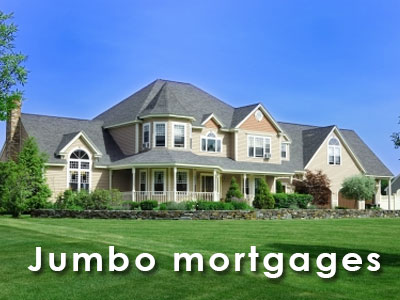
Mortgage rates have appreciably moved downs and ups this year. From record lows to two-year highs, rates have charted both ways. Since April, mortgage rates have climbed by more than 1%. Perhaps, this is the biggest rise within such a short spell of time. While the standard conforming loan rates are rising, jumbo loan rates have remained stable. This has minimized the interest rate difference between the conforming loans and the jumbo loans (non-conforming loans). Due to this narrowed down cost differences between these two form of loans, jumbo loans (which are used to purchase higher-priced luxury homes) are again becoming a desirable option to the home buyers. According to a recent study conducted by the mortgage research firm HSH Associates, on an average, currently, the rate on jumbo loans is only 21 basis points higher than the federally guaranteed conforming loans. Recent mortgage rate data reveals that in some high-cost metropoliton areas, rates on standard mortgages are even higher than the rates on Jumbo mortgages.
Because of this changed scenario, lenders are are trying to come out with the jumbo offers which are more attractive to the borrowers. Jumbo offers which almost went into oblivion during the peak of financial crisis, is again coming to the forefront. As the rising rate is showing no signs of abating, chances are there these privately-securitised non-conforming jumbo offers will make greater inroads.
Why the jumbo rate is higher standard mortgage rate?
A jumbo loan or a non-conforming loan is a mortgage offer that exceeds the limit stipulated by the Fannie Mae and Freddie Mac. The conforming loan limit for most parts of the country is $417,000, but in some high-cost areas this limit can move up to $625,500. Here it is to be noted that, Fannie Mae and Freddie Mac are two federal entities that purchase mortgages from private parties and securitize those mortgages sold to the borrowers. Since the jumbo loans do not conform to the norms set by the Fannie Mae and Freddie Mac, these loans are not guaranteed or securitized by the Fannie Mae and Freddie Mac.
Jumbo loans are taken out to purchase big, expensive or luxury homes. Usually, the rates of these loans are 1-2% higher than the rates of the conforming mortgages. Higher the amount of the jumbo loan, higher is the rate. Rates of the jumbo offers are higher because the lender is at more risk in offering a jumbo loan. In case the borrower defaults in repaying the jumbo loan, the lender finds it tough to sell the home, as the market for homes secured by jumbo loans is relatively small in size.
Why the jumbo offers are on a come back trail?
During the housing market boom, these privately-securitized big loan offers were very much present. But, the financial crisis that erupted in 2007, had almost sent it into the coffins. Now again, as the economy has sailed the rough weathers and is on a path of recovery, big mortgage offers are gradually making a come back. The rise in the rates of standard mortgages, mainly driven by the hint of the Federal Reserve to relax the quantitative easing policy, has narrowed down the interest rate differences between the standard mortgage and the jumbo offers. Given this narrow interest margin, many creditworthy borrowers are eyeing at bigger houses. This actually has led to gradual rise in the demand for jumbo mortgages.

